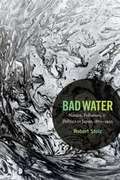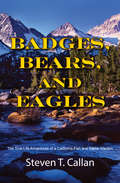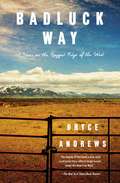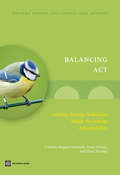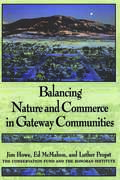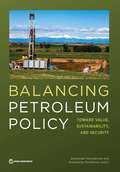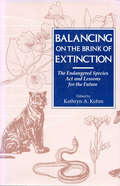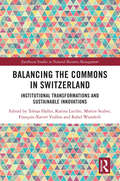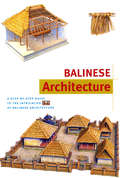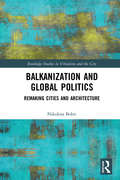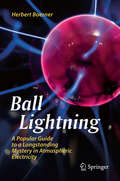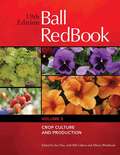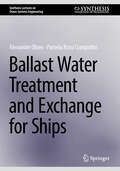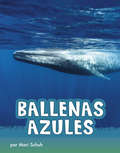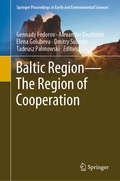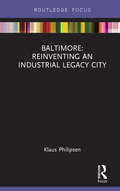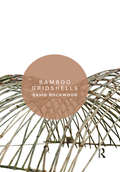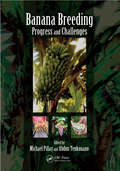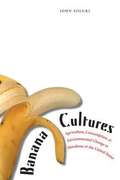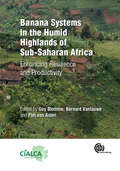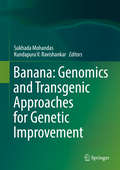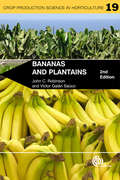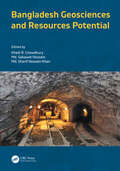- Table View
- List View
Bad Water: Nature, Pollution, and Politics in Japan, 1870–1950
by Robert StolzBad Water is a sophisticated theoretical analysis of Japanese thinkers and activists' efforts to reintegrate the natural environment into Japan's social and political thought in the late nineteenth century and early twentieth. The need to incorporate nature into politics was revealed by a series of large-scale industrial disasters in the 1890s. The Ashio Copper Mine unleashed massive amounts of copper, arsenic, mercury, and other pollutants into surrounding watersheds. Robert Stolz argues that by forcefully demonstrating the mutual penetration of humans and nature, industrial pollution biologically and politically compromised the autonomous liberal subject underlying the political philosophy of the modernizing Meiji state. In the following decades, socialism, anarchism, fascism, and Confucian benevolence and moral economy were marshaled in the search for new theories of a modern political subject and a social organization adequate to the environmental crisis. With detailed considerations of several key environmental activists, including Tanaka Shōzō, Bad Water is a nuanced account of Japan's environmental turn, a historical moment when, for the first time, Japanese thinkers and activists experienced nature as alienated from themselves and were forced to rebuild the connections.
Badges, Bears, and Eagles: The True-Life Adventures of a California Fish and Game Warden
by Steven T. Callan“This engrossing memoir by debut author Callan lets readers in on highlights of his 30-year career as a California wildlife officer” (Publishers Weekly, starred review). Over his thirty-year career as a wildlife protection officer for the California Department of Fish and Game, Steve Callan and his longtime working partner, Dave Szody, conducted some of the most fascinating, complex, and highly successful wildlife investigations in California history. They also collected a wealth of true stories—action-packed, suspenseful, and often humorous. In Badges, Bears, and Eagles, Steve provides a vivid first-person account of his “jaw-dropping, funny, tragic, enraging, exciting, and hopeful” adventures (Publishers Weekly, starred review). The author and his colleagues outsmart game hogs, thwart fish thieves, and foil outlaws with names like “Squeaky.” Steve is even stalked by African lions and mauled by a five-hundred-pound Bengal tiger. One of the most important cases of his career begins with a slain bald eagle dropped on the doorstep of the Fish and Game office, along with a note threatening the life of a fellow warden. A decade later, Steve and Dave conduct the investigation of their lives, uncovering a statewide criminal conspiracy to kill California black bears for their valuable gall bladders. These and other fascinating stories make for a truly unique, “exceptionally well written” memoir of conservation that “is almost flawless, and reading this gem is pure effortless joy” (International Game Warden).
Badluck Way: A Year on the Ragged Edge of the West
by Bryce Andrews"Mine might have been a simple, pretty story, if not for the wolves. In late July, they emerged from the foothills . . ." In this gripping memoir of a young man, a wolf, their parallel lives and ultimate collision, Bryce Andrews describes life on the remote, windswept Sun Ranch in southwest Montana. The Sun's twenty thousand acres of rangeland occupy a still-wild corner of southwest Montana--a high valley surrounded by mountain ranges and steep creeks with portentous names like Grizzly, Dead Man, and Bad Luck. Just over the border from Yellowstone National Park, the Sun holds giant herds of cattle and elk amid many predators--bears, mountain lions, and wolves. In lyrical, haunting language, Andrews recounts marathon days and nights of building fences, riding, roping, and otherwise learning the hard business of caring for cattle, an initiation that changes him from an idealistic city kid into a skilled ranch hand. But when wolves suddenly begin killing the ranch's cattle, Andrews has to shoulder a rifle, chase the pack, and do what he'd hoped he would never have to do. Badluck Way is about transformation and complications, about living with dirty hands every day. It is about the hard choices that wake us at night and take a lifetime to reconcile. Above all, Badluck Way celebrates the breathtaking beauty of wilderness and the satisfaction of hard work on some of the harshest, most beautiful land in the world. Called "an important meditation on what it means to share space and breathe the same air as truly wild animals" (Tom Groneberg, author of The Secret Life of Cowboys), Badluck Way is the memorable story of one young man's rebirth in the crucible of the West's timeless landscape, a place at the center of the heart's geography, savage and gorgeous in equal measure.
Balancing Act: Cutting Energy Subsidies while Protecting Affordability
by Caterina Ruggeri Laderchi Anne Olivier Chris TrimbleIn Eastern Europe and Central Asia there are significant pressures for residential energy tariffs to rise, as government budgets are increasingly stretched and cannot afford to pay large energy subsidies. Further pressures for tariffs to rise come from environmental concerns, as the tariff levels that households now face do not cover the social costs of energy production. Because reforms that would increase energy tariffs are likely to affect significantly the poor and the middle class, their political feasibility may be questioned unless appropriate ways of cushioning the impacts can be devised. Balancing these competing claims-fiscal and environmental concerns on the one hand, affordability and political economy concerns on the other-is a task that policy makers in the region are increasingly unable to put off. While challenging, the reforms needed for this balancing act can build on much that has been learned in the last decade in terms of improving the effectiveness of social assistance systems and increasing energy efficiency. This report suggests that a policy agenda that focuses on cutting subsidies to the energy sector, while investing in energy efficiency and supporting households at the bottom of the distribution, amounts to a new wave of policy reforms for the energy sector in transition countries. The feasibility of such an integrated policy agenda and the ability of these policies to balance the competing claims of fi scal responsibility and social concerns are explored through different policy scenarios, which, in their simplicity, help clarify the parameters of the policy choices many countries ECA are facing. This report is a part of a series of 3 regional reports. The series includes Growing green: The economic benefits of climate action in Europe and Central Asia, Balancing act: Cutting energy subsidies and protecting affordability and Lessons learned from energy efficiency success cases.
Balancing Nature and Commerce in Gateway Communities
by Edward T. Mcmahon Luther Propst Jim HoweIncreasing numbers of Americans are fleeing cities and suburbs for the small towns and open spaces that surround national and state parks, wildlife refuges, historic sites, and other public lands. With their scenic beauty and high quality of life, these "gateway communities" have become a magnet for those looking to escape the congestion and fast tempo of contemporary American society.Yet without savvy planning, gateway communities could easily meet the same fate as the suburban communities that were the promised land of an earlier generation. This volume can help prevent that from happening.The authors offer practical and proven lessons on how residents of gateway communities can protect their community's identity while stimulating a healthy economy and safeguarding nearby natural and historic resources. They describe economic development strategies, land-use planning processes, and conservation tools that communities from all over the country have found effective. Each strategy or process is explained with specific examples, and numerous profiles and case studies clearly demonstrate how different communities have coped with the challenges of growth and development. Among the cities profiled are Boulder, Colorado; Townsend and Pittman Center Tennessee; Gettysburg, Pennsylvania; Tyrrell County, North Carolina; Jackson Hole, Wyoming; Sanibel Island, Florida; Calvert County, Maryland; Tuscon, Arizona; and Mount Desert Island, Maine.Balancing Nature and Commerce in Gateway Communities provides important lessons in how to preserve the character and integrity of communities and landscapes without sacrificing local economic well-being. It is an important resource for planners, developers, local officials, and concerned citizens working to retain the high quality of life and natural beauty of these cities and towns.
Balancing Petroleum Policy: Toward Value, Sustainability, and Security
by Alexander Huurdeman Anastasiya RozhkovaPetroleum discovery in a country presents its policy makers with a challenging and complex task: formulating and agreeing on policies that will shape the country’s petroleum sector and guide the translation of the newly discovered resources into equitable and sustainable economic and social growth for the nation over the long term. Balancing Petroleum Policy provides policy makers and other stakeholders with the basic sector-related knowledge they need to embark on this task. It introduces a number of topics: the petroleum value chain and pivotal factors affecting value creation, a consultative process for developing a nation’s common vision on key petroleum development objectives, design of a legislative and contractual framework, petroleum fiscal regimes and their administration, prudent fiscal management, transparency and governance, environmental and social safeguards, and economic diversification through industrial linkages. Although much of the material is relevant to designing policies for the development of the petroleum sector in general, the book gives special focus to developing countries, countries in a federal or devolved setting, and countries that have experienced or are still experiencing civil conflict. With this focus in mind, the book examines three questions—ownership, management, and revenue sharing of petroleum resources—that are central to petroleum policy in any federal or devolved state. It also offers important perspectives on how to prevent violent conflicts related to such resources. Petroleum policies tend to vary significantly from country to country, as do the objectives that such policies aim to achieve in the specific context of each particular country. Although there is no one-size-fits-all policy and there are no clear-cut answers to the many potential policy dilemmas associated with the discovery of petroleum resources, this publication may help policy makers find the right balance among the chosen objectives—and the right policy choices to achieve these objectives.
Balancing on the Brink of Extinction: Endangered Species Act And Lessons For The Future
by Kathryn A. Kohm William ReffaltBalancing on the Brink of Extinction presents a comprehensive overview of the Endangered Species Act -- its conception, history, and potential for protecting the remaining endangered species.
Balancing the Commons in Switzerland: Institutional Transformations and Sustainable Innovations (Earthscan Studies in Natural Resource Management)
by Tobias Haller, Karina Liechti, Martin Stuber, François-Xavier Viallon and Rahel WunderliBalancing the Commons in Switzerland outlines continuity and change in the management of common-pool resources such as pastures and forests in Switzerland. The book focusses on the differences and similarities between local institutions (rules and regulations) and forms of commoners’ organisations (civic communities and corporations) which have managed common property for several centuries and have shaped the cultural landscapes of Switzerland. At the core of the book are five case studies from the German, French and Italian speaking regions of Switzerland. Beginning in the late medieval ages and focussing on the transformative periods in the 19th and 20th Century, it traces the internal and external political, economic and societal changes and examines what impact these changes had on commoners. It goes beyond the work of Robert Netting and Elinor Ostrom, who discussed Swiss commons as a unique case of robustness, by analysing how local commoners reacted to, but also shaped changes by adapting and transforming common property institutions. Thus, the volume highlights how institutional changes in the management of the commons on the local level are embedded in the public policies of the respective cantons, and the state, which generates a high heterogeneity and an actual laboratory situation. It shows the very different ways that local collective organisations and their members have followed in order to cope with the loss of value of the commons and the increased workload for maintaining common property management. Providing insightful case studies of commons management, this volume delivers theoretical contributions and lessons to be learned for the commons worldwide. This book will be of great interest to students and scholars of the commons, natural resource management and agricultural development.
Balinese Architecture Discover Indonesia
by Julian Davison Bruce GranquistBalinese Architecture is a step-by-step guide to the intricacies of Balinese vernacular architecture, the written word being complemented throughout by watercolor illustrations of different building types, design concepts and construction techniques.
Balkanization and Global Politics: Remaking Cities and Architecture (Routledge Studies in Urbanism and the City)
by Nikolina BobicEver-increasingly, countries, states and regions are voicing a desire to be autonomous through a process of balkanization. This book explores the historical emergence, interdisciplinary application and current sociospatial reasons why more places are seeking self-governance around the world. The spatialization of balkanization is particularly addressed in terms of destruction and renewal through a detailed sociopolitical interrogation of architecture and the urban, including their changing symbolic and functional forms. The book offers a reworking of the concept of balkanization through a reflective and critical analysis. The particular attention on the city of Belgrade, including the 1990s dissolution of Yugoslavia through specific case study focus of Croatia, Bosnia-Herzegovina and Serbia, provides insightful connections between balkanization, violent remaking and global politics. Against the detailed historical overview and prevailingly negative understanding of balkanization, a more positive instatement of balkanization for purposes of inclusivity and coexistence is also presented. The book will be relevant to academics and students interested in spatial politics. The broad analysis will appeal across disciplines such as Geography, Politics, Architecture and Urban Studies.
Ball Lightning: A Popular Guide to a Longstanding Mystery in Atmospheric Electricity
by Herbert BoernerBall lightning is an enigma. These luminous objects that appear occasionally during thunderstorms and can reach several meters in diameter have been a mystery to science for about 200 years. Despite several thousands of reported observations, their nature is still unknown. In this book, well documented cases of ball lightning are described and used to unravel some aspects of this mysterious form of atmospheric electricity. Throughout the book, the author discusses the various facets of the problem in an accessible but rigorous style, delivering a readable and informative text that will captivate the curious reader. He finally reaches the surprising conclusion that the solution to this puzzle may have been hidden in plain sight for many years. A foreword by Earle Williams, leading lightning researcher at MIT, introduces the book.
Ball Redbook: Crop Culture And Production
by Jim Nau Bill Calkins Allison WestbrookThis essential resource for professional plant growers includes techniques and advice intended for real-world greenhouse and nursery production. Information is offered on the basics of crop culture—media, nutrition, irrigation, water quality, light, temperature, crop scheduling, growth regulators, pest management, and more. In the Crops section, which is organized by botanical name, you will find details about propagation, growing on, insect and disease control, troubleshooting, and postharvest care. The plants represented in this compendium include annuals, perennials, flowering potted plants, herbs, vegetable bedding plants, and a new and detailed section on cannabis/hemp.
Ballast Water Treatment and Exchange for Ships (Synthesis Lectures on Ocean Systems Engineering)
by Alexander Olsen Pamela Rossi CiampoliniThe inadvertent transfer of harmful aquatic organisms and pathogens in the ballast water of ships has been determined to have caused a significant adverse impact to many of the world's coastal regions. The international maritime community, under the auspices of the IMO has developed several documents, including the “International Conventions for the Control and Management of Ship's Ballast Water and Sediments, 2004”, (Ballast Water Management Convention), which are aimed at preventing the introduction of unwanted aquatic organisms and pathogens through the discharge of ballast water and sediments. The Ballast Water Management Convention applies to vessels registered in a country which is party to the Convention and to those vessels registered in other countries when operating in the waters of a country which is party to the Convention. As a means to prevent, minimize and ultimately eliminate the risk to the environment, human health, property and resources arising from the transferof harmful aquatic organisms and pathogens through the control and management of vessel's ballast water and sediment, as well as to avoid unwanted side-effects from that control, the Convention requires vessels to conduct a ballast water exchange or be fitted with an approved ballast water management system. It is noted that several studies have shown that the effectiveness of ballast water exchange varies and is dependent on the vessel type (design), exchange method (sequential, flow-through and dilution methods), ballasting system configuration, exchange location, weather conditions and vessel's trading pattern. For these reasons (and others), it has been determined that ballast water exchange does not provide adequate protective measures to prevent damage from organisms and pathogens carried in a vessel's ballast, even though exchange was considered to be acceptable as an interim solution.This book includes updates for the clarification of Survey requirements and adds the definition of biological commissioning, testing as well as requirements for Class approved Service Providers to conduct biological commissioning testing. Moreover, this book includes updates due to the adoption of the requirements from IACS UR M74, Rev. 2 and UR F45 and is applicable for existing ships, where an application for approval for the plans of BWMS is made on or after 1 July 2022; or for new ships contracted for construction on or after 1 July 2022.
Ballenas azules (Animals en espanol)
by Mari Schuh¡Las ballenas azules son los animales ma´s grandes que jama´s hayan vivido en la Tierra! Pero no es fa´cil verlas porque esta´n escondidas en las profundidades del mar. Descubre fascinantes secretos y datos sobre estos majestuosos mami´feros acua´ticos.
Baltic Region—The Region of Cooperation (Springer Proceedings in Earth and Environmental Sciences)
by Gennady Fedorov Alexander Druzhinin Elena Golubeva Dmitry Subetto Tadeusz PalmowskiThe Baltic macroregion is a platform for the development of different areas of international cooperation, which are an important factor affecting the socioeconomic growth of the region’s states. The deteriorating political relations between Russia and its Baltic neighbours complicate the development of mutual connections. However, economic and sociocultural cooperation and joint environmental projects continue despite all the difficulties. Based on recent studies carried out by Russian and Polish researchers, this book examines current trends in the socioeconomic development of the region’s countries and various forms of transboundary cooperation and provides recommendations for further development. Special attention is paid to sustainable environmental management and environmental protection, transboundary ties among companies and among people, the development of international tourism, opportunities for reinforcing the contact function of the border, and spatial planning. The book addresses theoretical problems that are of crucial significance to economic development and transboundary cooperation, namely, those of path dependence, the emerge.
Baltimore: Reinventing an Industrial Legacy City (Built Environment City Studies)
by Klaus PhilipsenBaltimore: Reinventing an Industrial Legacy City is an exploration into the reinvention, self-reflection and boosterism of US legacy cities, taking Baltimore as the case study model to reveal the larger narrative. Author Klaus Philipsen investigates the modern urban condition and the systemic problems involved with adapting metropolitan regions into equitable and sustainable communities, covering topics such as growth, urban sprawl, the depletion of cities, social justice, smart city and open data, transportation, community development, sustainability and diversity. Baltimore’s proximity to the US capital, combined with its industrial past, presents the optimum viewpoint to investigate these challenges and draw parallels with cities across the world.
Bamboo Gridshells
by David RockwoodThis highly illustrated text brings together two areas which have both grown in popularity in recent years: gridshells and bamboo. Bamboo is a fast-growing, naturally available, renewable resource which is quite strong and lends itself to structural applications. In this unique text, David Rockwood demonstrates the viability of bamboo as a building material and considers the advantages – as well as the challenges – of working with bamboo. Its properties, workability, connections, assembly, erection processes, structural behavior, and final use are explored in detail through a series of design-build experiments and case studies from Hawai’i and Vietnam. The only book available on the subject, Bamboo Gridshells provides a comprehensive introduction to this emerging technology which will be of interest to anyone working in the areas of sustainable or environmental design, ecological construction, low technology strategies, or alternative materials.
Banana Breeding: Progress and Challenges
by Michael Pillay Abdou TenkouanoWith the current world population growth of 1.2%, the earth can expect to house 9-10 billion people by 2050. Food production, too, must increase to accommodate these numbers. Easy growing, high calorie, nutritious foods, such as bananas are the top priority as a solution to this imminent problem. The first comprehensive compendium on bananas in rec
Banana Cultures
by John SoluriBananas, the most frequently consumed fresh fruit in the United States, have been linked to Miss Chiquita and Carmen Miranda, "banana republics," and Banana Republic clothing stores-everything from exotic kitsch, to Third World dictatorships, to middle-class fashion. But how did the rise in banana consumption in the United States affect the banana-growing regions of Central America? In this lively, interdisciplinary study, John Soluri integrates agroecology, anthropology, political economy, and history to trace the symbiotic growth of the export banana industry in Honduras and the consumer mass market in the United States. Beginning in the 1870s when bananas first appeared in the U. S. marketplace, Soluri examines the tensions between the small-scale growers, who dominated the trade in the early years, and the shippers. He then shows how rising demand led to changes in production that resulted in the formation of major agribusinesses, spawned international migrations, and transformed great swaths of the Honduran environment into monocultures susceptible to plant disease epidemics that in turn changed Central American livelihoods. Soluri also looks at labor practices and workers' lives, changing gender roles on the banana plantations, the effects of pesticides on the Honduran environment and people, and the mass marketing of bananas to consumers in the United States. His multifaceted account of a century of banana production and consumption adds an important chapter to the history of Honduras, as well as to the larger history of globalization and its effects on rural peoples, local economies, and biodiversity.
Banana Systems in the Humid Highlands of Sub-Saharan Africa
by Michael Bolton David Turner Guy Blomme Anne Rietveld Nicolas Roux Deo Kantungeko Laurence Jassogne Idd Ramathani William Tinzaara Emily Ouma Svetlana Gaidashova Fenton Beed Muller Kamira Alex Barekye Francois Iradukunda Valentine Nakato Emmanuel Njukwe Piet Van Asten Charles Sivirihauma Faustin Ngama Boloy Edouard Rurangwa Walter Ocimati Bernard Vanlauwe Sam Mpiira Idja Sikyolo Joseph Adheka Alex Rutikanga'Banana Systems in the Humid Highlands of Sub-Saharan Africa: Enhancing Resilience and Productivity' addresses issues related to agricultural intensification in the (sub)humid highland areas of Africa, based on research carried out in the Great Lakes Region by the Consortium for Improving Agriculture-based Livelihoods in Central Africa.
Banana Systems in the Humid Highlands of Sub-Saharan Africa: Enhancing Resilience and Productivity
by Michael Bolton David Turner Anne Rietveld Nicolas Roux Deo Kantungeko Laurence Jassogne Idd Ramathani William Tinzaara Emily Ouma Svetlana Gaidashova Fenton Beed Muller Kamira Alex Barekye Francois Iradukunda Valentine Nakato Emmanuel Njukwe Charles Sivirihauma Faustin Ngama Boloy Edouard Rurangwa Walter Ocimati Sam Mpiira Idja Sikyolo Joseph Adheka Alex Rutikanga‘Banana Systems in the Humid Highlands of Sub-Saharan Africa: Enhancing Resilience and Productivity’ addresses issues related to agricultural intensification in the (sub)humid highland areas of Africa, based on research carried out in the Great Lakes Region by the Consortium for Improving Agriculture-based Livelihoods in Central Africa.
Banana: Genomics and Transgenic Approaches for Genetic Improvement
by Sukhada Mohandas Kundapura V. RavishankarBananas and plantains are among the most important food and cash crops in the world. They are cultivated in more than 135 countries, across the tropics and subtropics, with an annual global production of ca. 130 million metric tonnes. Though bananas are one of the most important components of food security in many developing countries, banana production is threatened by both abiotic and biotic stresses. These include a wide range of diseases and pests, such as bunchy top virus, burrowing nematodes, black Sigatoka or black leaf streak, Fusarium wilt, etc. In recent years, considerable progress has been made and several biotechnological and genomic tools have been employed to help understand and unravel the mysterious banana genome. Molecular and genomic studies have helped to decipher the Musa genome and its evolution. Genetic linkage map and whole genome sequencing of both Musa acuminata and Musa balbisiana (progenitors of cultivated banana) have completely changed the way of thinking and the approach on banana crop improvement. Whole-genome sequencing has helped to improve the selection of quantitative traits such as yield, as well as the selection of optimal parents for developing required hybrids in breeding programs. Gene isolation and the analysis of mutants have helped in the characterization of genes of agronomic value and the associated regulatory sequences. With the advent of molecular markers and new statistical tools, it is now possible to measure the diversity, identify genes and useful alleles linked to important agronomic traits. Further these alleles can be incorporated into cultivars through marker assisted selection or through transgenic approach. Transgenic approaches are potential tools for direct transfer of these genes into popular cultivars, which are generally not amenable for conventional breeding techniques, in specific with crops such as bananas which are sterile, triploid and heterozygous thereby making it difficult to reconstruct the recurrent genotypes in banana. Transgenic techniques thus have helped overcome the difficulty of working with sterile, triploid banana crop. In the last five years, enormous amount of new information and techniques have been generated for banana. A comprehensive book entitled "Banana: Genomics and Transgenic Approaches for Genetic improvement" on banana genomics, latest transgenic technologies and tools available for improved crop development in banana will address all these requirements.
Bananas and Plantains
by John Robinson Víctor Galán SaúcoBananas and plantains are major fruit crops in the tropics and subtropics, making a vital contribution to the economies of many countries. In the last 15 years, substantial changes have occurred in banana production, among them the increased importance of fungal and viral diseases and their serious impact on Cavendish export cultivars, smallholder plantains and cooking bananas. Changes in production systems such as protected greenhouse cultivation, organic, fair-trade and integrated cultivation and their respective certification schemes have also become prominent. This book provides an accessible review of the scientific principles of banana production and how these relate to field practices. Revised and updated with expanded coverage of world trade statistics and policies, breeding of new cultivars in relation to disease resistance and markets, prospects for genetically-modified bananas and the increasing role of endophytes in controlling pests and diseases, this new edition is an essential resource for researchers and students in horticulture.
Bananas and Plantains (2nd edition)
by John C. Robinson Victor Galan SaucoThis book provides an accessible review of the scientific principles of banana production and relates these to field practices. This revised and updated edition includes expanded coverage of world trade, organic and integrated cultivation, and cultivation in greenhouses.
Bangladesh Geosciences and Resources Potential
by Khalil R. ChowdhuryThis book focuses on the potential natural resources of Bangladesh from Precambrian to recent times and their detailed geological background. Natural resources and their management are important for the sustainable economic development of a country. Focusing on the geological setting of the Bengal Basin, Bangladesh Geosciences and Resources Potential introduces and comprehensively describes the depositional environments, status and prospects of the potential natural resources of Bangladesh. Individual chapters outline the potential resources comprising a wide range of deposit types across the country. A selective overview of these natural resources—metallic minerals, coal, limestone, hydrocarbon, peat, placer deposits, surface, groundwater and so forth—is provided with relevant references. The book gives a synthesis of the issues in the mineral, hydrocarbon and water resource sectors from a resource-economic perspective. FEATURES Provides a geoscientific knowledge of the potential natural resources with relevant maps, figures and tables pertaining to the Bangladesh region Explains the resource-economic context, geomorphology and sustainable land use and the effects of climate change on both surface water and groundwater resources Discusses resource potentials based on systematic geological stages Presents the resources of renewable energy and discusses how to increase their use and effectiveness Reinforces basic geological processes and outcomes with an understanding of resource geology and constraints on natural resource management This book is aimed at researchers, graduate students and professionals in geology, energy and mineral resources, hydrogeology, water resources engineering, the environmental sciences and resource exploration and planning.
